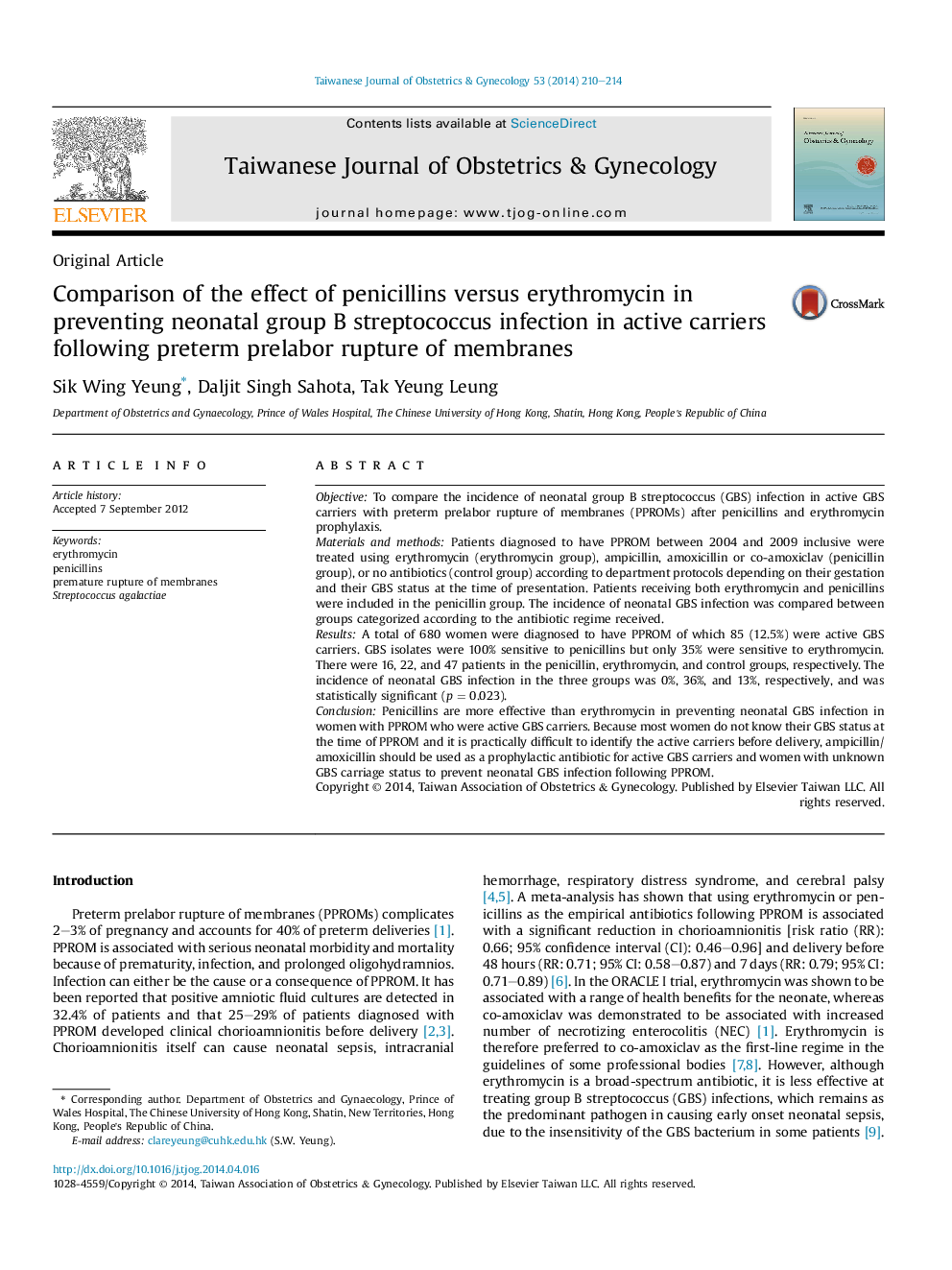| Article ID | Journal | Published Year | Pages | File Type |
|---|---|---|---|---|
| 3975128 | Taiwanese Journal of Obstetrics and Gynecology | 2014 | 5 Pages |
ObjectiveTo compare the incidence of neonatal group B streptococcus (GBS) infection in active GBS carriers with preterm prelabor rupture of membranes (PPROMs) after penicillins and erythromycin prophylaxis.Materials and methodsPatients diagnosed to have PPROM between 2004 and 2009 inclusive were treated using erythromycin (erythromycin group), ampicillin, amoxicillin or co-amoxiclav (penicillin group), or no antibiotics (control group) according to department protocols depending on their gestation and their GBS status at the time of presentation. Patients receiving both erythromycin and penicillins were included in the penicillin group. The incidence of neonatal GBS infection was compared between groups categorized according to the antibiotic regime received.ResultsA total of 680 women were diagnosed to have PPROM of which 85 (12.5%) were active GBS carriers. GBS isolates were 100% sensitive to penicillins but only 35% were sensitive to erythromycin. There were 16, 22, and 47 patients in the penicillin, erythromycin, and control groups, respectively. The incidence of neonatal GBS infection in the three groups was 0%, 36%, and 13%, respectively, and was statistically significant (p = 0.023).ConclusionPenicillins are more effective than erythromycin in preventing neonatal GBS infection in women with PPROM who were active GBS carriers. Because most women do not know their GBS status at the time of PPROM and it is practically difficult to identify the active carriers before delivery, ampicillin/amoxicillin should be used as a prophylactic antibiotic for active GBS carriers and women with unknown GBS carriage status to prevent neonatal GBS infection following PPROM.
